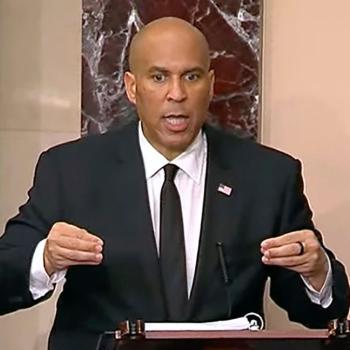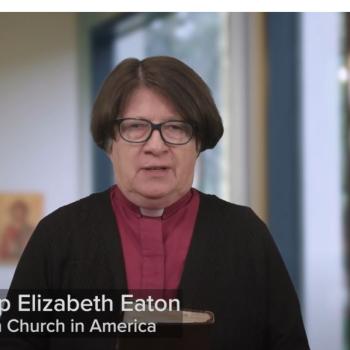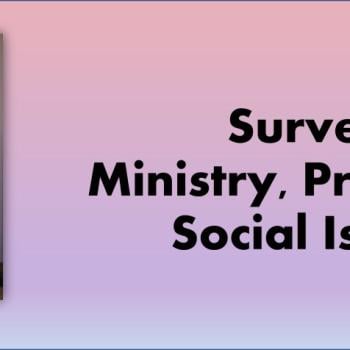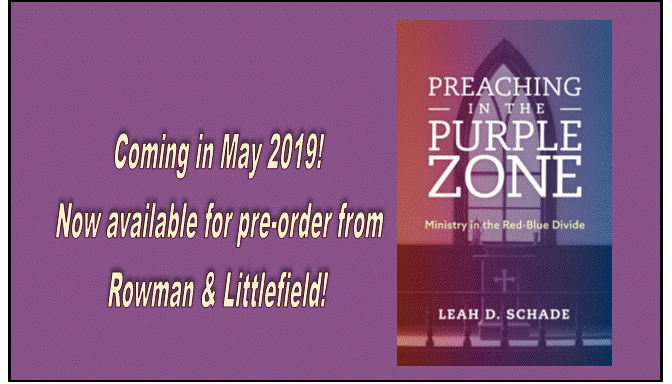
Preaching in the Purple Zone is a resource for helping the church understand the challenges facing parish pastors, while encouraging and equipping preachers to address the vital justice issues of our time.
This book provides practical instruction for navigating the hazards of prophetic preaching with tested strategies and prudent tactics grounded in biblical and theological foundations. Key to this endeavor is using a method of civil discourse called “deliberative dialogue” for finding common values among politically diverse parishioners.
Unique to this book is instruction on using the sermon-dialogue-sermon process I developed that expands the pastor’s level of engagement on justice issues with parishioners beyond the single sermon. Preaching in the Purple Zone equips clergy to help their congregations respectfully engage in deliberation about “hot topics,” find the values that bind them together, and respond faithfully to God’s Word.
Here is a sneak preview of what you’ll find in each chapter:
Chapter One explores why preachers are reticent to engage controversial issues in preaching and forthrightly names what’s at stake for clergy, congregations, the larger church, and society.
Results from my 2017 survey of preachers shows the difficult challenges that clergy face when preaching about controversial justice issues. I’ll establish what I mean by the word “justice,” and use the work of Leonora Tubbs Tisdale in Prophetic Preaching as a spring board into this project.
In Chapter Two we’ll explore what people mean when they say that a sermon is “too political.”
Using the categories of principles, emotions, and relationships, I’ll deconstruct the term “politics” and reframe it within the larger context of public theology informed by Richard Niebuhr’s Christ and Culture. This chapter will look specifically at the tension between the notion of the separation of church and state and the Lutheran doctrine of the Two Kingdoms.
We’ll then discuss how to find alternative language for the word “politics,” noting that Jesus himself was a “political” preacher, in that he addressed issues of public concern and directly addressed the powers and principalities. Chapter Two concludes with a suggestion proposed by Richard Voelz to reclaim the image of the preacher-as-teacher and offers tips on how to prepare a congregation for a prophetic sermon.
Chapter Three asks the question, “What is prophetic preaching?” with the help of reflections from various homileticians.
The word “prophet” comes from the Greek word meaning “spokesperson.” When used to describe a certain kind of preaching, it generally refers to a sermon that addresses the structural, social or systemic issues affecting individuals, communities, or society at large.
After examining the homiletical precedent for preaching in dialogue with different voices, we’ll trace the historical and ethical movement in homiletics from authoritative to inductive to conversational preaching. This last is the mode of preaching best suited for the Purple Zone because it welcomes conversation as the community discerns the theological, scriptural, traditional, and experiential implications of engaging issues of public concern. As we will see, it is conversational preaching that enables the prophetic word to be heard and integrated into the lives of the listeners and the larger congregation.
In Chapter Four, I offer my “Five Paths of Prophetic Preaching,” and make the case that there are many entry points for addressing controversial issues in the pulpit.
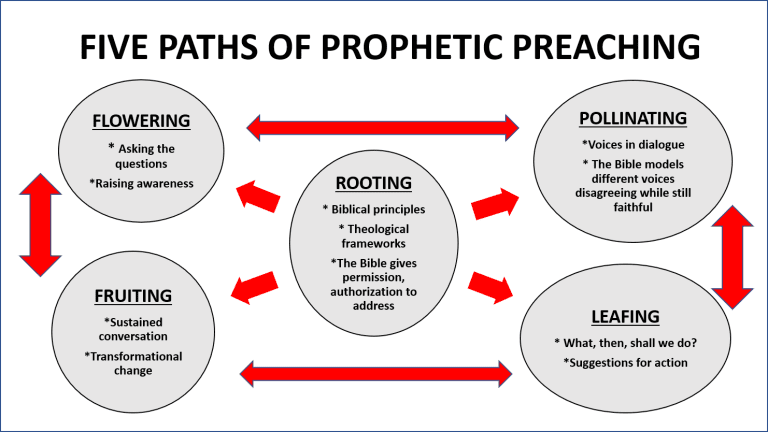
The key to Purple Zone preaching, however, is approaching both scripture and the sermon itself with a “dialogical lens” for interpreting scripture informed by a public theology for preaching. It is preaching that stands at the crossroads of church and society, finding ways to create dialogue through listening, understanding, discernment, and finding common values. A selection of sermon excerpts will show how this dialogical lens can be applied for preaching a variety of scripture passages.
Chapter Five will help the preacher and congregation prepare for the sermon-dialogue-sermon process.
To help us set the stage, we turn to the figure of Lydia of Thyatira whose story in Acts gives us a model for how we might prepare ourselves for entering the Purple Zone. In this chapter we’ll go through the practical steps of determining the timeline for the sermon-dialogue-sermon process, and how to choose a topic to address. This will include taking a “temperature reading” of the congregation’s tolerance of conflict, as well as how they might respond to a particular issue depending on their context. I’ll provide some advice on choosing a “cool,” “warm,” or “hot” topic, as well as address the way a congregation’s “theology of conflict” can impact the choice of a topic. The chapter concludes with suggestions on preaching a “topical sermon,” drawing on the work of Ronald Allen.
In Chapter Six, I introduce the sermon-dialogue-sermon method beginning with the first sermon, the Prophetic Invitation to Dialogue.
Rather than a once-and-done approach to addressing social issues, this method requires the preacher to think expansively and more long-term in their preparation and planning. In this chapter, I explain how to preach a sermon introducing a controversial justice issue for the congregation to address in one’s ministry setting.
In this sermon, instead of taking a stand on an issue, the preacher acknowledges its complexity, considers many voices and perspectives, and frames it within a scriptural and theological context. Listeners are invited to participate in a deliberative dialogue about the topic, assured that the Holy Spirit’s gift of discernment is part of this process within the Body of Christ. This chapter includes several sermon excerpts to illustrate how this prophetic invitation approach can be applied for various scripture passages and within different contexts.
Chapter Seven is about the process of deliberative dialogue developed by the Charles F. Kettering Foundation and the National Issues Forum Institute (NIFI).

Deliberative dialogue involves small groups of diverse individuals in face-to-face round-table discussions using non-partisan issue guides available from the NIFI. Moderated by a facilitator, participants begin with ground rules for how they will conduct themselves in the dialogue. They then share what is at stake for them in this topic and how it has touched them personally. Next, they weigh the pros and cons of three different approaches to the issue. Together they then discern what common values emerge. These values provide a basis for “next steps,” such as continued dialogue or specific actions to engage the issue within the congregation or ministry setting.
In this chapter, step-by-step instructions for the process help the reader to host a deliberative dialogue in their own congregation. A few examples of how deliberative dialogue has been used in different churches are included.
Chapter Eight explains the follow-up sermon after the deliberative dialogue, the Communal Prophetic Proclamation.
This sermon is informed by the “collaborative/conversational” form described in John McClure’s The Roundtable Pulpit. By incorporating aspects of the deliberative dialogue and lifting up different perspectives that were explored, the sermon lifts up the shared values discerned by the group as well as possible next steps the congregation could take to move forward on the issue. In this sermon, the preacher raises up a prophetic witness as arising from the dialogue, rather than from her or his own position on the issue.
This sermon emphasizes God’s presence in the midst of the complexity and the Spirit’s guidance within the dialogue. This enables the congregation to see beyond partisanship in order to move into more genuine community. Thus, the culture of the church begins to transform from that of either divisiveness or avoidance, to one of healthy conversation and faithful engagement with the issues that concern the common good. Two sermon excerpts round out the chapter by showing examples of Communal Prophetic Proclamation.
Chapters Nine and Ten include case studies of the sermon-dialogue-sermon process, along with sermon excerpts and descriptions of the situations in which each sermon was preached.
These examples are drawn from preachers I have trained in this process through the courses I have taught. Chapter Nine will show how four different preachers approached the same topic – immigration. In Chapter Ten, the case studies include health care, end-of-life issues, climate change, and food insecurity.
The final chapter summarizes the insights gained from the sermon-dialogue-sermon process and frames them within the image of bridge-building and the “prophetic care” concept developed by the late Dale P. Andrews.
This chapter also includes a section on what to do when the sermon-dialogue-sermon method fails. Despite our best efforts, some congregational systems are unable to engage difficult topics and conversations in a healthy way. I will offer suggestions for picking up the pieces when bridges collapse to help both pastor and congregation take steps toward recovery. I will also show how the bridge between the red-blue divide can also lead to even more connections and possibilities for healing and growth beyond the single congregation.
Click here to pre-order your copy of Preaching in the Purple Zone: Ministry in the Red-Blue Divide today!
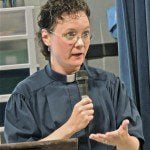
Leah D. Schade is the Assistant Professor of Preaching and Worship at Lexington Theological Seminary (Kentucky) and author of the book Creation-Crisis Preaching: Ecology, Theology, and the Pulpit (Chalice Press, 2015).
Twitter: @LeahSchade
Facebook: https://www.facebook.com/LeahDSchade/




